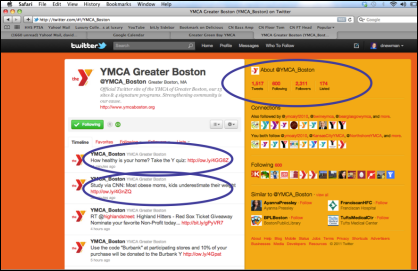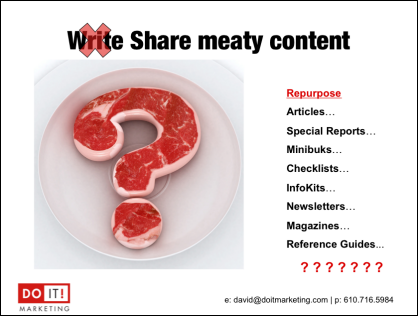
I asked one of my favorite marketing coaching clients, "How's your DIP?"
She responded, "Dip? We're talking party recipes now?"
"No, no - remember the acronym I shared with you last time? DIP stands for Dollars In Play." She remembered.
Then she asked me to hang on as she shuffled through some notes and papers.
"Where are you looking for these numbers?" And she said that she keeps a scratch pad by her keyboard and has a more detailed tracking document that she updates every couple of weeks on her computer.
"Oh my goodness, there's your problem right there. You have to keep this info right in front of your face all day long."
REALLY in front of your face. My suggestion - make a poster using something as simple as a piece of flipchart paper and two different size Post-It notes: the Jumbo size and the smaller 3x3 square size.
Here's what a DIP (Dollars in Play) wall chart looks like:

Here's how it works:
1. Two categories: one called "In Play" and the other one for less serious prospects ("Jokers") You can see in the photo above, I've had a little fun and made a silly cartoon joker card. These are folks who are in my pipeline but (in my estimation) less serious, less committed, and less capable of making the financial commitment to hire me.
2. Post your prospects' full names, the service/product/program you discussed with them, the dollar value, and the source. For example, Jane Doe came from a referral from Frank. We have not talked yet, so there's no dollar value. Nat Cole came from Linkedin and we talked about a $1500 1-on-1 marketing consulting package. Sam Smith is hiring me for a $6500 speech in October. (All prospect names have been changed for the purposes of this blog post and photo - could you tell?)
3. Real time updates. Sometimes I'll even grab my pad of 3x3 Post-Its and write someone's name down WHILE I'm on the phone with them, walk over to the wall chart and stick their name on it. Can't tell you how satisfying this physical act can be.
4. Fluid movement. Don't be afraid to upgrade a joker to the serious column and don't be afraid to take a (formerly) serious prospect and move them into the Joker column. The factors to consider are their commitment level based on email and phone communication, their level of responsiveness, and how rapidly you are moving them from point to point in your sales process.
5. Reminders rule. If you see someone on your chart whom you have not spoken with or heard from in a few weeks, you probably need to get back in touch. Ideally, you never have a prospect who is just "floating" out there without a firm decision call on their calendar. But it happens. The chart reminds you to close those loops and corral your prospecting mustangs back onto your sales ranch.
6. Relentless removal. Remember the old sales adage, "Some will. Some won't. Who cares? Next!" That's the point of the chart. Up or out. If you're not going to buy, I'm going to cut you loose and throw you back in the ocean. The SECOND most fun you'll have with this chart (after slapping a brand new prospect's name onto the chart) is grabbing a prospect who said no - or who has disappeared on you despite your best efforts to hold them to their commitments - and RIP their name off the chart and tear it into tiny little pieces and chuck it in the trash.
7. Do the math. Feel the power. The point of tracking your sales pipeline in this manner is so that you have a real-time sense of "Dollars in Play." Every so often, you should glance over at your chart and add up the numbers that you see in the "In Play" column ONLY. (Don't add the jokers because that's why they're in the joker column - instead, do everything you can to move your jokers into the "In play" column or remove them altogether!)
In the photo above, you would have a "Dollars in Play" number of $21,000. For prospects who are considering mutliple options (for example, Mindy Kaling is holding a proposal with a $7500 option and a $2500 option), you should count the higher number.
Two reasons: 1.) It sets your internal expectation in that direction which will enhance your confidence in your subsequent conversations with Mindy. A confident seller creates confident buyers. So it's a self-fulfilling prophecy. 2.) It builds your capacity for marketing optimism, which every entrepreneur needs. Plus if you're going to be relentless in removing people (See Rule #6 above), you might as well be relentlessly optimistic about the folks who earn and keep a place in your active sales pipeline.
Now, are YOU ready for some DIP?
What do YOU think? Please use the COMMENTS area below to share your advice, insights and recommendations on this topic and join the conversation...



 How can we offer a risk-free trial of our product/service?
How can we offer a risk-free trial of our product/service?







 Prepare, don't memorize.
Prepare, don't memorize.





